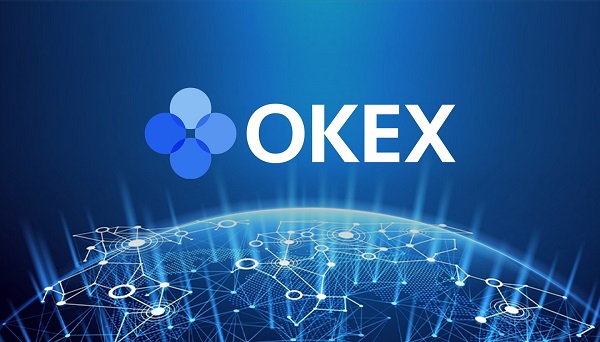Vector databases have become increasingly prominent, especially in applications that involve machine learning, image processing, and similarity searches. Unlike traditional databases that store data as scalar values (numbers and strings), vector databases are designed to handle multidimensional data points, typically represented as vectors. These vectors can be used to model complex items like images, videos, and text in a format that machines can interpret for tasks such as content recommendation, anomaly detection, and more. Let’s explore 14 different vector databases and provide a comparative analysis of several key parameters.
Faiss (Facebook AI Similarity Search)
Faiss, developed by Facebook AI, is designed for efficient similarity search & clustering of dense vectors. It works well with GPUs for maximum efficiency.
Pros: High performance, GPU acceleration, robust in handling very large vector sets.
Cons: Mainly focused on similarity search, less flexibility for other database operations.
Milvus
An open-source vector database, Milvus is optimized for scalable similarity search and AI applications. It supports multiple metric types and is highly scalable.
Pros: Highly scalable, supports multiple metrics, easy integration with AI frameworks.
Cons: Requires a good understanding of its architecture for optimal setup.
Annoy (Approximate Nearest Neighbors Oh Yeah)
Annoy is a C++ library with Python bindings that searches for points in space that are close to a given query point. It is primarily used for music and image recommendation systems.
Pros: Very fast, lightweight, allows for static files.
Cons: It is not as scalable for large data sets, such as an in-memory database.
ScaNN (Scalable Nearest Neighbors)
Developed by Google, ScaNN is a library designed to search for nearest neighbors in a large dataset efficiently. It works well with TensorFlow.
Pros: High performance, integrates well with TensorFlow, efficient on large datasets.
Cons: Complexity in setup and tuning.
Hnswlib
A user-friendly library that enables efficient and fast approximate nearest neighbor search. It is based on the Hierarchical Navigable Small World (HNSW) graph.
Pros: Fast search times, efficient memory usage, and open-source.
Cons: Limited by the characteristics of the HNSW algorithm, more suitable for academic use.
Pinecone
A fully managed vector database service that simplifies building and scaling vector search applications. It provides an easy-to-use API.
Pros: Managed service, easy scaling, intuitive API.
Cons: Cost can be a factor as it is a managed service with less control over the underlying hardware.
Weaviate
An open-source smart vector search engine that supports GraphQL and RESTful APIs. It includes features like automatic machine learning indexing.
Pros: Feature-rich, supports semantic search, integrated ML capabilities.
Cons: Requires resources for optimal operation complex configuration.
Qdrant
Qdrant is a vector search engine that supports persistent storage and performs well. It focuses on maintaining the balance between search speed and update speed.
Pros: Balances search and update speeds, persistent storage, and good documentation.
Cons: Relatively new, smaller community.
Vespa
Developed by Yahoo, Vespa is an engine for low-latency computation over large data sets. It’s highly scalable and supports machine-learned model inference.
Pros: High scalability, built-in machine learning support, comprehensive features.
Cons: Complex architecture, steeper learning curve.
Vald
A highly scalable distributed vector database that uses Kubernetes. Vald offers automatic indexing and backup features.
Pros: Kubernetes native, automatic indexing, resilient design.
Cons: Complexity of deployment requires Kubernetes knowledge.
Vectorflow
Vectorflow is a vector database designed for real-time vector indexing and search in a distributed environment.
Pros: Real-time operations support distributed architecture.
Cons: It needs to be known, and there may be a smaller support community.
Jina
An open-source neural search framework that provides cloud-native neural search solutions powered by AI and deep learning.
Pros: AI-driven, supports deep learning models, and is highly extensible.
Cons: It can be overkill for simpler search tasks and requires deep learning expertise.
Elasticsearch with vector plugins
Elasticsearch is a broadly used search engine that can effectively handle vector data when equipped with vector search plugins.
Pros: Extensive community, robust features, well-documented.
Cons: Plugins required for vector functionality can be resource-intensive.
Zilliz
A cloud-native vector database designed for AI and big data challenges. It leverages the power of modern GPUs for processing.
Pros: GPU acceleration, designed for AI applications, scalable.
Cons: GPU dependency might increase costs, and it is relatively new.
Comparative Table
To better compare the vector databases, let’s break down the parameters into more specific categories and check each database’s capabilities, such as particular features, technology compatibility, and operational nuances.
Comparative Table: Different Vector Databases
In conclusion, the landscape of vector databases is rich and varied, with each platform offering unique strengths tailored to specific use cases and technical requirements. From highly scalable solutions like Milvus and Elasticsearch, designed to handle enormous datasets and complex queries, to specialized offerings like Faiss and Annoy, optimized for speed and efficiency in similarity searches, there is a vector database to suit nearly any need. Managed services like Pinecone are easy and simple, making them ideal for those seeking quick deployment without deep technical overhead. Meanwhile, platforms like Vespa and Jina bring advanced capabilities like real-time indexing and deep learning integration, which are suitable for cutting-edge AI applications. Choosing the right vector database requires careful consideration of scalability, performance, ease of use, and feature set, as highlighted in the detailed comparison table.
![]()
Hello, My name is Adnan Hassan. I am a consulting intern at Marktechpost and soon to be a management trainee at American Express. I am currently pursuing a dual degree at the Indian Institute of Technology, Kharagpur. I am passionate about technology and want to create new products that make a difference.




